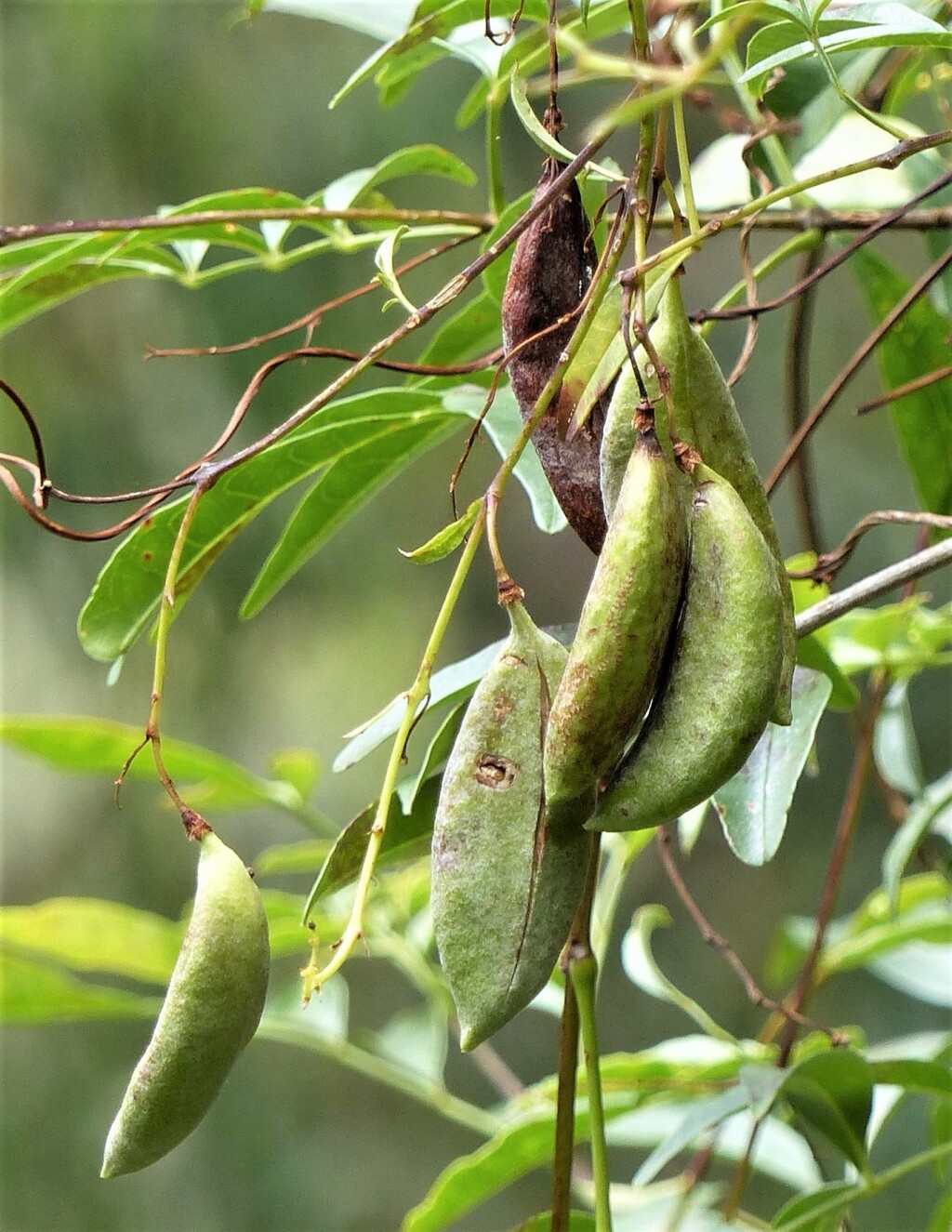Pandorea pandorana
(Andr.) Steenis Wonga-vineWoody climber or scrambler to 6 m high or more, glabrous; branches longitudinally ridged with age. Leaves mostly opposite, strongly dimorphic; juvenile leaves 2–8 cm long with 8–17 small, bluntly toothed leaflets; adult leaves 8–16 cm long, mostly with 3–9 leaflets; leaflets more or less ovate, mostly 2.5–8 cm long, 5–30 mm wide, apex acuminate, mucronate, base rounded to cuneate, margins usually entire; petiole 1–4.5 cm long; lateral petiolules 1–2 mm long. Inflorescences 5–15 cm long, several- to many-flowered thyrses, sometimes reduced to racemes, pendent. Pedicels 2–8 mm long; calyx cup-shaped, 3–5 mm long, obscurely lobed, ciliate; corolla 1–2.5 cm long, tube more or less straight, bearded inside, glabrous outside, white to cream, usually with purple blotches or stripes in throat, lobes 3–6 mm long, spreading. Capsule oblong-ovoid, 4–10 cm long, 10–20 mm wide; seeds 10–15 mm diam. Flowers Aug.–Nov.
VRiv, GipP, OtP, NIS, EGL, EGU, WPro, HSF, HNF, Strz, MonT, HFE, VAlp. Also WA, Qld, SA (native and naturalised), NSW, Tas. Locally common in wet sclerophyll forests and moist gullies, or sometimes on exposed rocky sites, in the eastern half of the State.
An extremely variable species, particularly in terms of its habit, the number, size and shape of leaflets, and the size and colour of flowers. The above circumscription excludes plants from inland parts of Australia (not extending to Victoria) that are sometimes recognized as the distinct species P. doratoxylon. These plants have more or less linear leaflets and an erect shrubby habit.
Jeanes, J.A. (1999). Bignoniaceae. In: Walsh, N.G.; Entwisle, T.J., Flora of Victoria Vol. 4, Cornaceae to Asteraceae, pp. 546–547. Inkata Press, Melbourne.
 Spinning
Spinning



